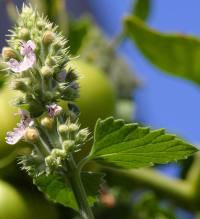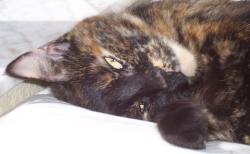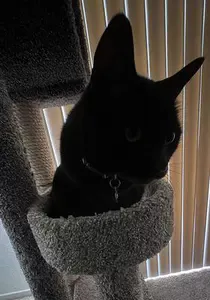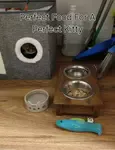Growing Catnip For Fun Or Profit
Growing catnip for fun, profit, or your cat's enjoyment is pretty easy. It's a fairly hardy plant, so, with a little pruning work and some watering, you should be blooming in no time.
Catnip (Nepeta cataria), whether dried, fresh cuttings, or the full plant, can provide hours of entertainment for you and your cat.
I've always found it very gratifying to give catnip as a treat, or refresh the sisal rope or cat toys and watch the kitties gather together and go crazy over the 'nip.
In case you've had a similar experience, or would like to, I thought I'd provide some information on growing your own. If you're ambitious, you could even turn your catnip growing habit into a business.
Cultivation And Growing Conditions

Catnip plants grow under various conditions, including indoors (with sun) and hydroponics. They prefer sun, but will grow in partial sun or even shade.
Plants will propagate from seeds, root cuttings, or stem cuttings.
Here's some good, practical information (with photos) on "how to grow killer catnip bud" by a true cat lover.
According to this experienced catnip grower, the key is in giving the plant lots of water, as well as proper pruning.
In addition, be sure to view the photos of the Himalayan kitty cat Stella Blue as well, and read Wally's account of her story. His writing says a lot about his relationship with her.
Here are some simple tips and advice from the Gardener's Network on growing catnip, including soil choice, harvesting, and drying.
Herbgardening.com has information on how to grow catnip as well.
Commercial Growing
Catnip is a perennial plant, and a member of the mint family. It also is referred to as cat mint (or catmint, or cat-mint).
As a crop it is considered to be fairly short-lived though, and most commercial growers will treat catnip as a 2 to 3 year crop.
The plant is not only sold for the benefit of cats and their owners, however, as it has been used for many years for medicinal purposes.
Catnip tea is available at health food stores and is said to have a calming effect and may soothe intestinal discomfort. It's also known as a remedy for colds and flu.
To get started growing catnip (either commercially or for "purrsonal" use), and for more information as well as purchasing seeds, try Richters.
If you're thinking about becoming a commercial grower, do your homework first. Being a crop growing farmer is not a task to be taken on lightly. You could grow indoors, in a greenhouse, or outdoors in certain areas with the right climate.
You could start your commercial growing enterprise small, and supply area stores and companies with your crop. Get high quality plants and seeds in order to distinguish your product line.
In any case, growing catnip commercially (or any crop) can be a difficult business. Expect and plan for setbacks, loss of crops, and lots of hard work!
Things To Do With Catnip
What to do with your catnip?
As a treat: Give it to your cat of course!
Cat toys: Dry it and make catnip toys or freshen up the toys you have.
Scratching post: Is your cat scratching or climbing the furniture? Rub it on a sisal scratching post or board to encourage your cats to use that instead of your nice leather furniture.
As ground cover: Catnip grows to about 3 to 4 feet or so. Catnip may take over an area as it spreads quite easily if left to its own devices. If you grow it outdoors, it's best to create a defined bed to contain it, or grow it in containers.
Bird attractor: Catnip may attract birds, butterflies, and bees. I'm sure your cat will appreciate the birds and the butterflies, but I'm not so sure about the bees!
The Catnip Response

If genetically predisposed, a cat will find catnip hard to resist.
If you're growing catnip outdoors, cats may dig it up, eat it, and roll in it, destroying the plants.
Some cats may ignore it, however, until the skin of the plant is broken or bruised, releasing the oil.
Others will begin to nibble on the plant anyway, and then go from there.
Nepetalactone is the chemical in catnip oil that makes cats respond the way they do. Nepetalactone is a cat attractant, so don't grow it unfettered outdoors and expect a feline-free yard.
Not all cats have the gene that makes them respond to the nepetalactone in catnip, but most do (about 75 to 80 percent or so, down to 50% depending upon which source you trust). Although the gene is not sex-dependent, males are said to respond more strongly to it.
Kittens under three months will not respond at all, so you can't tell if a kitten will do the dance as an adult.
I have read that feline bloodlines in Australia are less likely to have the "catnip gene," so a lower percentage of cats "down under" will respond to it.
I haven't confirmed this, and I know that breeders often import cats from other countries to mix up the bloodlines (although the quarantine makes this difficult). Also, purebred and feral or non-purebred domestic cat bloodlines are obviously very different.
I don't have any data on the prevalence of the gene or the effects of catnip across different cat breeds, but that might be an interesting research project.
Mosquito Repellent
The nepetalactone in catnip oil also affects insects, and repels mosquitoes, termites, and cockroaches. This opens up an opportunity for commercial catnip growers to create, among other things, catnip-based mosquito repellent.
Growing catnip for use as a non-toxic pest control sounds like a good idea for a green business. Organically grown 'nip is supposed to be high quality as well, so that would tie in with the green idea.
The Bird Cage Hypothesis
If you're concerned about your catnip plants being destroyed by your overzealous cat, this is where a bird cage can come into play (ironic that a bird cage would be the solution to a problem with dealing with cats and plants).
One of our readers was having a problem with her cat using the neighbor's yard as a toilet.
I suggested that she place a catnip plant inside a bird cage in the yard to encourage her outdoor cat to stay close by more often.
This is a trick I've seen written up in a few different places in order to protect the plant, but give your cat access to the leaves.
You could also grow it indoors inside the bird cage as well. Just make sure you secure the cage so that your cat doesn't push it around the house.
If you have a plant eater around the house (you know who you are), it can be difficult to keep flowers or plants indoors without having them all chewed up.
With the 'nip around, your other plants may get less attention. Growing catnip in a bird cage indoors may give your cat both a plant eating fix and a catnip high.




Comments: What do you think?
Have your say about what you just read. Leave me a comment in the box below.